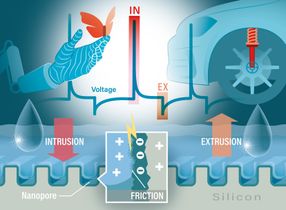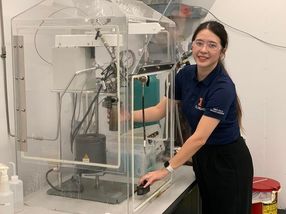Time of Eating Changes Lipid Profile During Intermittent Fasting
A new look at the circadian rhythm of metabolism
Advertisement
The time of eating influences the lipid metabolism in our body. A study conducted at the German Center for diabetes Research (DZD) and the German Institute of Human nutrition Potsdam-Rehbruecke (DIfE) shows: Eating earlier in the day leads to measurable changes in fat metabolism, as compared to a later eating window with the same calorie intake and nutrient composition.
Intermittent fasting, also known as time-restricted eating (TRE), has gained widespread attention as a potential approach to improving metabolic health and reducing the risk of obesity and type 2 diabetes. This dietary pattern limits daily food intake to a fixed time window – often around eight hours. However, questions remain about whether the timing of that window during the day influences lipid metabolism.
A team led by Olga Ramich, Heisenberg Professor at the German Institute of Human Nutrition Potsdam-Rehbruecke (DIfE) and the Charité – Universitätsmedizin Berlin, has conducted the ChronoFast study to investigate this subject. The randomized crossover trial included 31 women who were overweight or obese. They followed two dietary TRE phases: two weeks of eating during an early time window (8 a.m. to 4 p.m.) and two weeks during a late time window (1 p.m. to 9 p.m.), each with nearly the same calorie intake and nutrient composition. Blood was taken from the participants before and after each intervention phase and an additional sample was taken from the subcutaneous adipose tissue on the abdomen after each intervention.
Lipidomics allows insight into lipid metabolism
The researchers used state-of-the-art lipidomics to analyze over 300 lipids and lipid-like molecules in blood plasma. Their result: Only early eating (eTRE) resulted in significant changes in lipid metabolism. Overall, the concentration of 103 lipid types decreased. This was particularly true for ceramides and phosphatidylcholines. These are compounds that play a role in the development of type 2 diabetes and cardiovascular diseases. The activity of certain enzymes of the lipid metabolism also changed significantly with eTRE.
“We see that the timing of meals has an influence on the regulation of fat metabolism,” says Ramich, who heads the Department of Molecular Metabolism and Precision Nutrition at the DIfE. “Eating early – in line with internal circadian rhythms – leads to measurable changes in the lipid profile and enzyme activity, while eating late does not have this effect.”
Molecular differences in adipose tissue
In order to understand the origin of such effects, the researchers examined the gene activity (transcriptome) in the subcutaneous adipose tissue of the participants in the study. They found clear differences between early and late eating. The glycerophospholipid metabolic pathway, a central process for building cell membranes and regulating inflammation, was particularly affected.
Based on a combined analysis of the lipidome and transcriptome data using the metaKEGG software, which was developed at the DIfE, the researchers identified three genes whose activity changed differently depending on the time of eating. These genes encode the enzymes that release fatty acids from phospholipids and thus control important remodeling processes in adipose tissue.
“Our analyses show that adipose tissue reacts differently to early and late eating. This enabled us to identify a specific signaling pathway whose involvement in mealtime effects was previously unknown,” summarizes Ramich.
A new look at the circadian rhythm of metabolism
The researchers point out that their study is a secondary analysis of the ChronoFast study. Although there were no major differences in classic blood test parameters such as cholesterol or triglycerides between early and late eating, there were differences at the molecular lipid level, which indicates the great potential of lipidomics analyses.
“Our data opens up new perspectives on the concept of chrononutrition in obesity and diabetes prevention,” summarizes Ramich. “The data suggests that synchronizing nutrition with the circadian rhythm could be an effective strategy for optimizing fat metabolism and preventing metabolic diseases.”
Original publication
Kristof Szekely, Mathias J. Gerl, Beeke Peters, Julia Schwarz, Bettina Schuppelius, Markus Damm, Jorge R. Soliz‐Rueda, Ratika Sehgal, Michail Lazaratos, Christian Klose, Kai Simons, Andreas F. H. Pfeiffer, Annette Schürmann, Achim Kramer, Andreas Michalsen, Olga Pivovarova‐Ramich; "Impact of Intended Isocaloric Early versus Late Time‐Restricted Eating on Plasma Lipidome in Women with Overweight or Obesity: Secondary Analysis of the ChronoFast Trial"; Advanced Science, 2025-11-4



























































